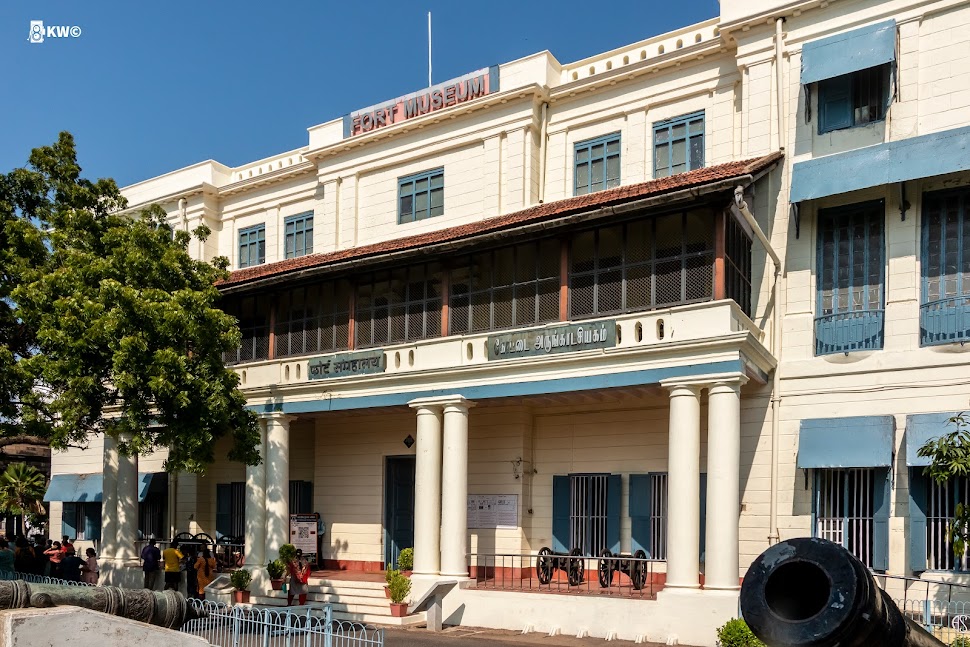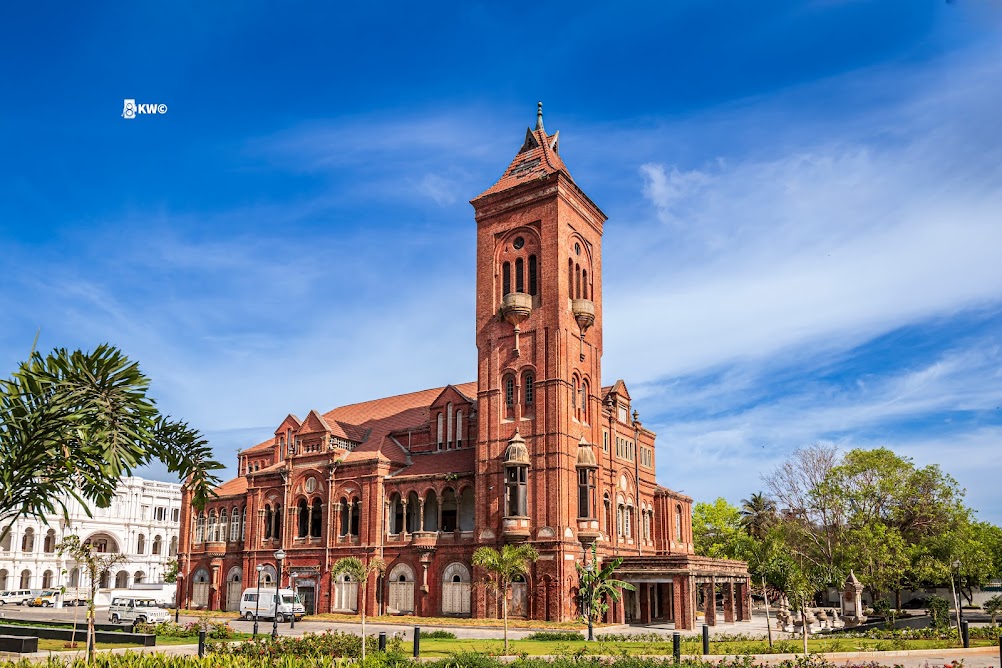Forgotten Lighthouses' of Madras
Please do not use the pictures without getting my permission, as these photos are copywritten. If you need one please write to me, email address is given below.
In February 1795, maritime officials petitioned the British government to build a lighthouse at Fort St. George to serve as a navigational aid, allowing vessels to enter the open anchorage at all times. The request was approved and the steeple of St. Mary's Church was considered as the site for the new lighthouse. However, the proposal did not materialize due to opposition from the chaplains. Hence, the terrace of the officer's mess-cum-exchange building (the present day's Fort Museum) was chosen as the location for the new lighthouse, and the first lighthouse started functioning in 1796. It used a large oil-wick lantern to aid vessels approaching the port. Situated at 99 feet above sea level, it had 12 lamps fueled by coconut oil.[5] Small country mirrors were used as reflectors.[6] The beam emanating from the lamp swept the sea as far as 25 miles from the shore. Signals were exchanged with the lighthouse by merchants on the ship, who would conduct all the transactions later in the Public Exchange Hall downstairs, which served as a meeting point for brokers, merchants, and commanders of ships. The first lighthouse functioned till 1841.
In 1834, further to the petition by vice-admiral Sir John Gore about the necessity to have a more advanced lighthouse, the East India Company asked Capt. T. J. Smith of the Corps of Engineers, then on home leave in England, to suggest alternatives. When Capt. Smith returned to Madras in 1837, he brought with him a new apparatus.
The second lighthouse was erected during 1838–1844 on the north side of Fort St. George. Work began in 1838 on a granite column in the compound of the present High Court. The column was designed by Smith, who had by then been promoted to Major. The stone for the construction was sourced from quarries in Pallavaram.Work was completed in 1840 at a total cost of ₹ 60,000, on which the wick lamp was shifted as the supply of the new equipment by Stone Chance, Birmingham was delayed. The apparatus cost a further ₹ 15,000 and was of the most sophisticated kind for its times. On 9 October 1843, a public announcement was made that the new Madras Light was completed, and it would be fully functional from 1 January 1844.







Comments
Post a Comment